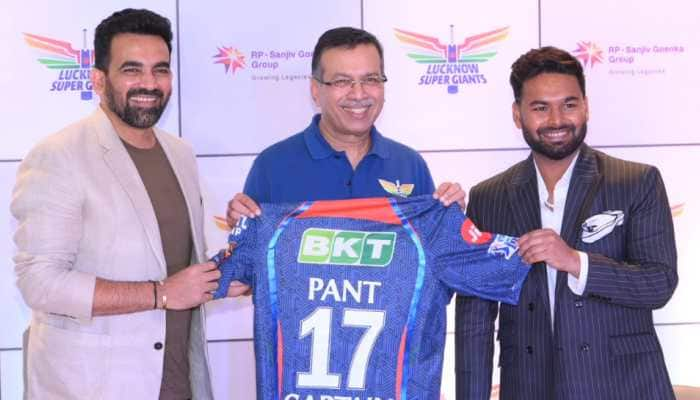Health for all: Still a mirage
Substantial socioeconomic inequalities still exist in access to healthcare.
Trending Photos
)
 Akrita Reyar
Even though the Indian Constitution charged the State (national as well as state governments) with "raising of the level of nutrition and the standard of living of its people and the improvement of public health” as among its primary duties, the goal is far from being fulfilled.
As per a study released at Harvard University in January, 2011, substantial socioeconomic inequalities still exist in access to healthcare in India. National immunisation coverage, for example, after over 60 years of Independence is only 44%.
The study says, India also accounts for a substantial proportion of the global burden of disease, with 18% of deaths and 20% of disability-adjusted life-years (DALYs). And although the burden of chronic disease accounts for 53% of deaths (44% of DALYs), 36% of deaths (42% of DALYs) are attributable to communicable diseases, maternal and perinatal disorders, and nutritional deficiencies, which suggests a protracted epidemiological transition.
“A fifth of maternal deaths and a quarter of child deaths in the world occur in India. Life expectancy at birth is 63 years for boys and 66 years for girls, and the mortality rate for children younger than 5 years is 69 per 1000 livebirths in India—higher than the average for Southeast Asia (63 per 1000 livebirths),” the report further reveals.
The finding is that: “Although health outcomes have improved with time, they continue to be strongly determined by factors such as gender, caste, wealth, education, and geography. Caste in India represents a social stratification: categories routinely used for population-based monitoring are Scheduled Caste, Scheduled Tribe, Other Backward Class, and other caste; Scheduled Tribes (8%) and Schedules Castes (16%) are thought to be the most socially disadvantaged groups in India.”
“For example, the infant mortality rate was 82 per 1000 livebirths in the poorest wealth quintile and 34 per 1000 livebirths in the richest wealth quintile in 2005–06.10”
“The mortality rate in children younger than 5 years who are born to mothers with no education compared with those with more than 5 years of education was 106 per 1000 livebirths and 49 per 1000 livebirths, respectively, during 1995–96 to 2005–06.”
It is not that the Indian government is unaware of the magnitude of the problem in the health sector. In the Union Budget this year, outlay for healthcare sector was increased by 20% from Rs 22,300 crore in 2010-11 to Rs 26,760 crores.
The average life expectancy of a male in India is now 63 as compared to 60 a decade ago, while a female lives 66 years, in India, says a report released by the World Health Organisation this year.
As an acknowledgement of the fact, Colin Mathers, Coordinator of Mortality and Burden of Disease at WHO feels, "Life expectancy and overall health of Indians has been impressive notwithstanding high levels of maternal and child mortality, high income disparities, and increasing infectious and non-communicable (heart diseases, stroke, diabetes and cancer) diseases."
The Indian healthcare industry is also seen to be growing at a rapid pace and is expected to become a USD 280 billion industry by 2020. Health tourism is becoming a major draw as treatment charges are far lower than Western countries.
Yet, as things stand, despite competitive treatment charges, as compared to global standards, healthcare is still far out of reach for the poor.
The other problem relates with poor sanitation and unavailability of clean drinking water. The reason why diseases such as dengue, hepatitis, tuberculosis, malaria, pneumonia and diarrhea continue to thrive is due to lack of hygiene and basic amenities.
For us to bridge the gap between super-specialty hospitals and dysfunctional dispensaries, we need to:
1. Make it compulsory for doctors passing out of medical colleges (especially government-run or those offering subsidized education) to serve in rural or slum areas for a year or two.
2. Make serving in rural and slum areas lucrative through incentives to doctors.
3. Find innovative ways to solve the problem of providing clean drinking water across India.
4. Through campaigns make citizens aware about the benefits of maintaining hygiene and not littering their surroundings. A course of sanitation should be introduced at the elementary school level.
5. India is ranked 3rd among the countries with the most number of HIV-infected. Awareness should be created about ways AIDS is transmitted and stigma associated with the disease should be removed.
6. Medical treatment must carry the correct fee. Hospital syndicates to fleece insurance companies by charging excessive amounts must be disallowed.
7. Crackdown on all types of food adulteration.
8. Crackdown on all factories making fake medicine. Capital punishment is recommended for those indulging in counterfeit practices.
9. Provide proper facilities for transportation of food especially vegetables, milk and poultry.
10. All hospitals which avail subsidies – in purchase of land or acquisition of equipment – must be made to provide free medical treatment to the poor. There should be a strong monitoring mechanism to ensure that hospitals don’t just make false promises and busy themselves with minting money.
11. Village and small town dispensaries should be made effective. Government must ensure these small outlets do not face shortage of medicine and medical practioners.
12. Medical courses should be tailor-made for rural areas. These can be of shorter duration and need not emphasize so much on state of art technology, rather concentrate more on basic treatment.
13. Above all, we need to control our population.
(This article is part of the Looking Ahead series.)
Akrita Reyar
Even though the Indian Constitution charged the State (national as well as state governments) with "raising of the level of nutrition and the standard of living of its people and the improvement of public health” as among its primary duties, the goal is far from being fulfilled.
As per a study released at Harvard University in January, 2011, substantial socioeconomic inequalities still exist in access to healthcare in India. National immunisation coverage, for example, after over 60 years of Independence is only 44%.
The study says, India also accounts for a substantial proportion of the global burden of disease, with 18% of deaths and 20% of disability-adjusted life-years (DALYs). And although the burden of chronic disease accounts for 53% of deaths (44% of DALYs), 36% of deaths (42% of DALYs) are attributable to communicable diseases, maternal and perinatal disorders, and nutritional deficiencies, which suggests a protracted epidemiological transition.
“A fifth of maternal deaths and a quarter of child deaths in the world occur in India. Life expectancy at birth is 63 years for boys and 66 years for girls, and the mortality rate for children younger than 5 years is 69 per 1000 livebirths in India—higher than the average for Southeast Asia (63 per 1000 livebirths),” the report further reveals.
The finding is that: “Although health outcomes have improved with time, they continue to be strongly determined by factors such as gender, caste, wealth, education, and geography. Caste in India represents a social stratification: categories routinely used for population-based monitoring are Scheduled Caste, Scheduled Tribe, Other Backward Class, and other caste; Scheduled Tribes (8%) and Schedules Castes (16%) are thought to be the most socially disadvantaged groups in India.”
“For example, the infant mortality rate was 82 per 1000 livebirths in the poorest wealth quintile and 34 per 1000 livebirths in the richest wealth quintile in 2005–06.10”
“The mortality rate in children younger than 5 years who are born to mothers with no education compared with those with more than 5 years of education was 106 per 1000 livebirths and 49 per 1000 livebirths, respectively, during 1995–96 to 2005–06.”
It is not that the Indian government is unaware of the magnitude of the problem in the health sector. In the Union Budget this year, outlay for healthcare sector was increased by 20% from Rs 22,300 crore in 2010-11 to Rs 26,760 crores.
The average life expectancy of a male in India is now 63 as compared to 60 a decade ago, while a female lives 66 years, in India, says a report released by the World Health Organisation this year.
As an acknowledgement of the fact, Colin Mathers, Coordinator of Mortality and Burden of Disease at WHO feels, "Life expectancy and overall health of Indians has been impressive notwithstanding high levels of maternal and child mortality, high income disparities, and increasing infectious and non-communicable (heart diseases, stroke, diabetes and cancer) diseases."
The Indian healthcare industry is also seen to be growing at a rapid pace and is expected to become a USD 280 billion industry by 2020. Health tourism is becoming a major draw as treatment charges are far lower than Western countries.
Yet, as things stand, despite competitive treatment charges, as compared to global standards, healthcare is still far out of reach for the poor.
The other problem relates with poor sanitation and unavailability of clean drinking water. The reason why diseases such as dengue, hepatitis, tuberculosis, malaria, pneumonia and diarrhea continue to thrive is due to lack of hygiene and basic amenities.
For us to bridge the gap between super-specialty hospitals and dysfunctional dispensaries, we need to:
1. Make it compulsory for doctors passing out of medical colleges (especially government-run or those offering subsidized education) to serve in rural or slum areas for a year or two.
2. Make serving in rural and slum areas lucrative through incentives to doctors.
3. Find innovative ways to solve the problem of providing clean drinking water across India.
4. Through campaigns make citizens aware about the benefits of maintaining hygiene and not littering their surroundings. A course of sanitation should be introduced at the elementary school level.
5. India is ranked 3rd among the countries with the most number of HIV-infected. Awareness should be created about ways AIDS is transmitted and stigma associated with the disease should be removed.
6. Medical treatment must carry the correct fee. Hospital syndicates to fleece insurance companies by charging excessive amounts must be disallowed.
7. Crackdown on all types of food adulteration.
8. Crackdown on all factories making fake medicine. Capital punishment is recommended for those indulging in counterfeit practices.
9. Provide proper facilities for transportation of food especially vegetables, milk and poultry.
10. All hospitals which avail subsidies – in purchase of land or acquisition of equipment – must be made to provide free medical treatment to the poor. There should be a strong monitoring mechanism to ensure that hospitals don’t just make false promises and busy themselves with minting money.
11. Village and small town dispensaries should be made effective. Government must ensure these small outlets do not face shortage of medicine and medical practioners.
12. Medical courses should be tailor-made for rural areas. These can be of shorter duration and need not emphasize so much on state of art technology, rather concentrate more on basic treatment.
13. Above all, we need to control our population.
(This article is part of the Looking Ahead series.)
Stay informed on all the latest news, real-time breaking news updates, and follow all the important headlines in india news and world News on Zee News.
Advertisement
Live Tv
Advertisement







)
)
)
)
)
)
)
)
)
)
